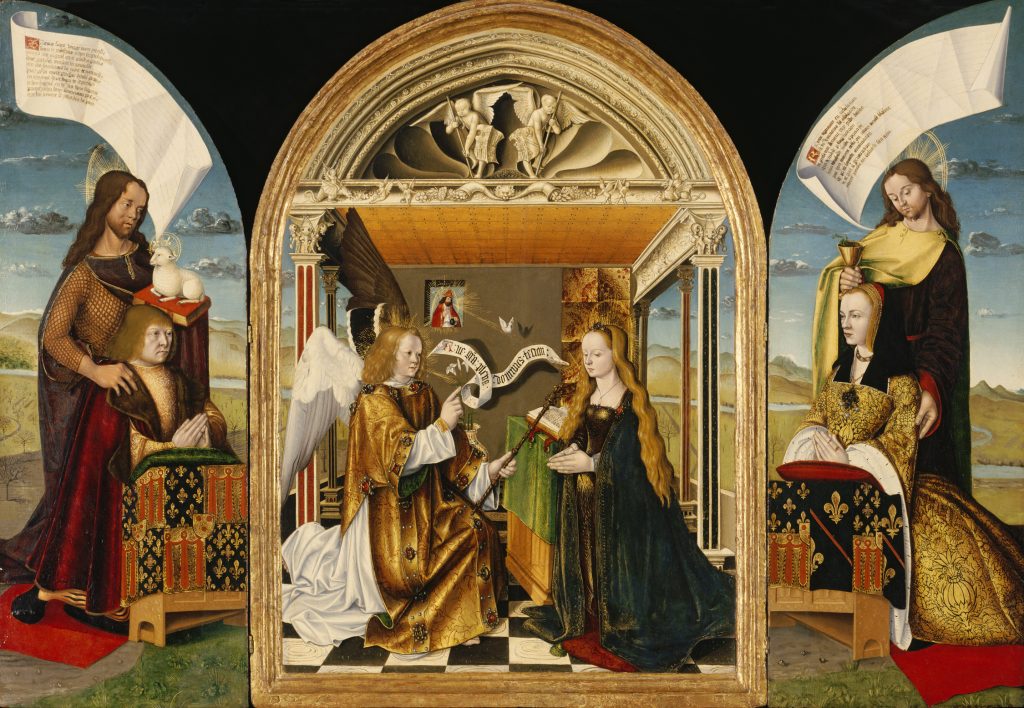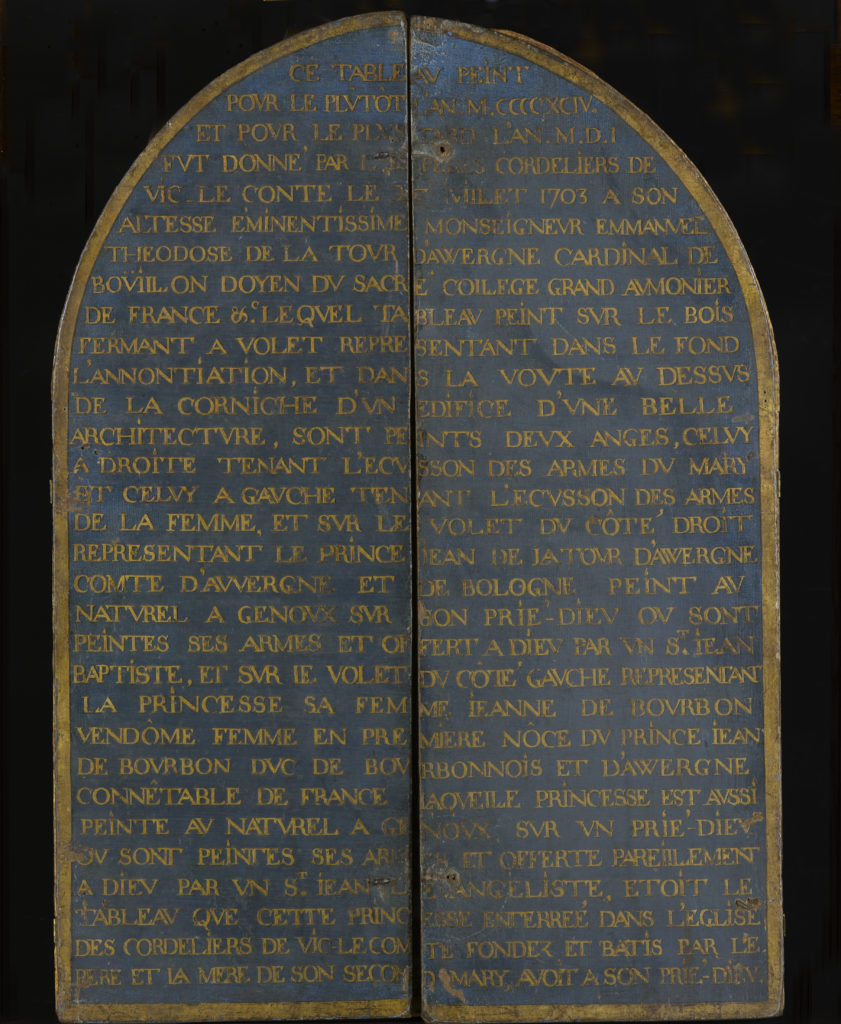Triptych for Jean III de La Tour de Boulogne, Comte d’Auvergne, and Jeanne de Bourbon-Vendȏme, Comtesse de Boulogne et d’Auvergne (work of art)
Artwork Info
Key Ideas
- This painting depicts the Virgin Mary, Jesus’s mother, receiving the news from the angel Gabriel that she is going to have a child.
- The scene includes the hills of Auvergne (oh-vern), a former region of France, depicted in the background. It was common in Renaissance paintings to show religious scenes as though they happened in one’s own home town.
- On either side of the center scene are portraits of the donors who paid for the painting. In their portraits they kneel before John the Baptist and John the Evangelist respectively. The banners above the donors are the prayers of the saints.
- This painting combines traditional tempera paint with the realistic oil painting style that became popular during the Renaissance.
- Renaissance artists used specific symbols in their work as clues to communicate who was being depicted in their paintings. John the Baptist is portrayed in this painting with his symbol, a lamb.
Learn More
The subject of this three-panel painting, or triptych (trip-tick), is the angel Gabriel announcing to the Virgin Mary that she is to be the mother of Christ. The Latin phrase on the scroll between the angel and the Virgin Mary translates to “Hail [Mary], full of grace, the Lord is with you.”
The two outer panels of the triptych, which close like shutters, have preserved the painting in excellent condition. These panels depict the Count and Countess of Latour d’Auvergne, the donors who paid for the painting. The donors’ first names, Jean and Jeanne, are the French masculine and feminine equivalents of the name John, which links them with their patron saints. On the left panel, John the Baptist wears a shirt made from rough animal hair, also known as a “hair shirt,” as a reminder of his journey through the wilderness. He holds a lamb to represent his famous words, “Behold the Lamb of God,” which reveal Jesus as the subject of prophecy. On the right panel, John the Evangelist is identified by his chalice, or large cup, filled with poison. According to legend he was challenged to drink a cup of poison to demonstrate the power of his faith.
French verses on the banners above the donors offer prayers to the Virgin Mary on their behalf. The verses on the left scroll refer to Gabriel’s annunciation and pray for the salvation of the Count. The verses on the right request that the Countess be blessed with children.
This painting was created in the beginning of the Renaissance in France, when biblical events were often portrayed in a natural setting. The hills and other natural surroundings accurately depict the region of Auvergne. Key features of Renaissance style in this painting include the way the landscape and architecture recede into space and the shadows that are cast by the dove and the angel’s scroll. Some of the architectural details reveal the artist’s familiarity with Italian Renaissance architecture. Medieval symbols that survived into this period include the Holy Spirit entering the room in the form of a dove, the golden rays of light surrounding the tiny figure of God in the window, and the white lilies that symbolize the Virgin’s purity.
tags: symmetry, symbolism, family, communication, meaning, order, pattern, narrative
Additional Resources
Resources for Teachers:
- Explore a lesson plan designed to help students identify the main story in a work of art.
- View a timeline of major events that happened in France from the 1400s to the 1600s and learn more about the Renaissance.
- Examine another painting with similar subject matter and compare it to this triptych.
Resources for Students:
- Explore an activity inspired by this painting.
- Watch a video to learn how Renaissance artists include clues that help viewers identify the subjects of the paintings.
- Listen to an NCMA curator explain this triptych.


